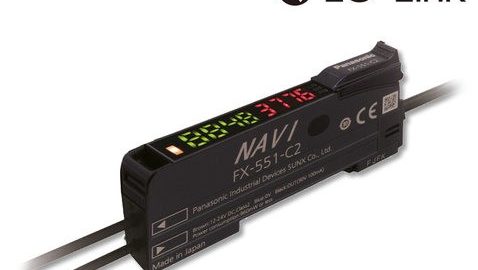
Ảnh minh họa cảm biến kép tích hợp IO-Link. (Nguồn: Panasonic)
Today, dual sensor technology combined with IO-Link helps users control product quality effectively, easily estimate the time of sensor maintenance, replace easily during use and help reduce cost.
Cost reducing
Using stronger, smarter sensors allows manufacturers to tackle more applications with fewer devices, reducing upfront costs and long-term costs to maintain additional sensors. With these multifunction devices, manufacturers can standardize on fewer sensor models, which also helps reduce storage costs and simplifies operator training.
IO link communication
Another important technology that can save time and money in quality control applications is IO-Link communication. IO-Link allows two-way data exchange from IO-Link-enabled sensors and is connected to an original. With IO-Link communication, sensor data can be accessed in real time and recorded for long-term analysis. This allows quality control processes to be monitored in real time and optimized over time based on the data stored. Key benefits include real-time remote monitoring and diagnostics, predictive maintenance, and automated device replacement.
Real-time monitoring and diagnostics
IO-Link gives users the ability to display errors and health status from each sensor. This means that users can see not only what the sensor is doing, but how well it works. In addition, real-time diagnostics allow users to easily identify when the sensor malfunctions and diagnose problems without turning off the device or the device. For example, IO-Link users can quickly pinpoint exactly why a test condition fails, helping to resolve the issue faster. The pass rate / test failure rate can be monitored over time to determine the best course of action.
Furthermore, the discovery function with IO-Link indicates which sensors need attention, especially where multiple sensors are grouped together. When there are multiple sensors in a confined space, it may be difficult to determine which sensor to clean. The discovery function allows the problematic sensor to blink, making it easy to identify and solve problems quickly, reducing unexpected downtime.
Predictive maintenance
IO-Link communication can also be used for predictive maintenance. For example, the wear and tear in a sensor that exceeds the allowed level due to the accumulation of debris can affect the sensor function over time. With IO-Link, operators can be alerted in advance so the sensor can be cleaned before it fails.
Easy automatic device replacement
When a device requires a replacement, the ability to store IO-Link data, which allows automatic parameter reassignment (this function is also known as Automatic Device Replacement or ADR). Users can input existing sensor parameter values into an alternative sensor for seamless replacement, helping the new device operate as quickly as possible.
Conclude
In general, adopting smarter sensors with dual mode and IO-Link communication can help address more error-proofing applications with greater reliability and fewer devices. Selecting smart sensors also allows factory managers to optimize their quality control processes based on data from the devices themselves.
Productivity and Quality Office